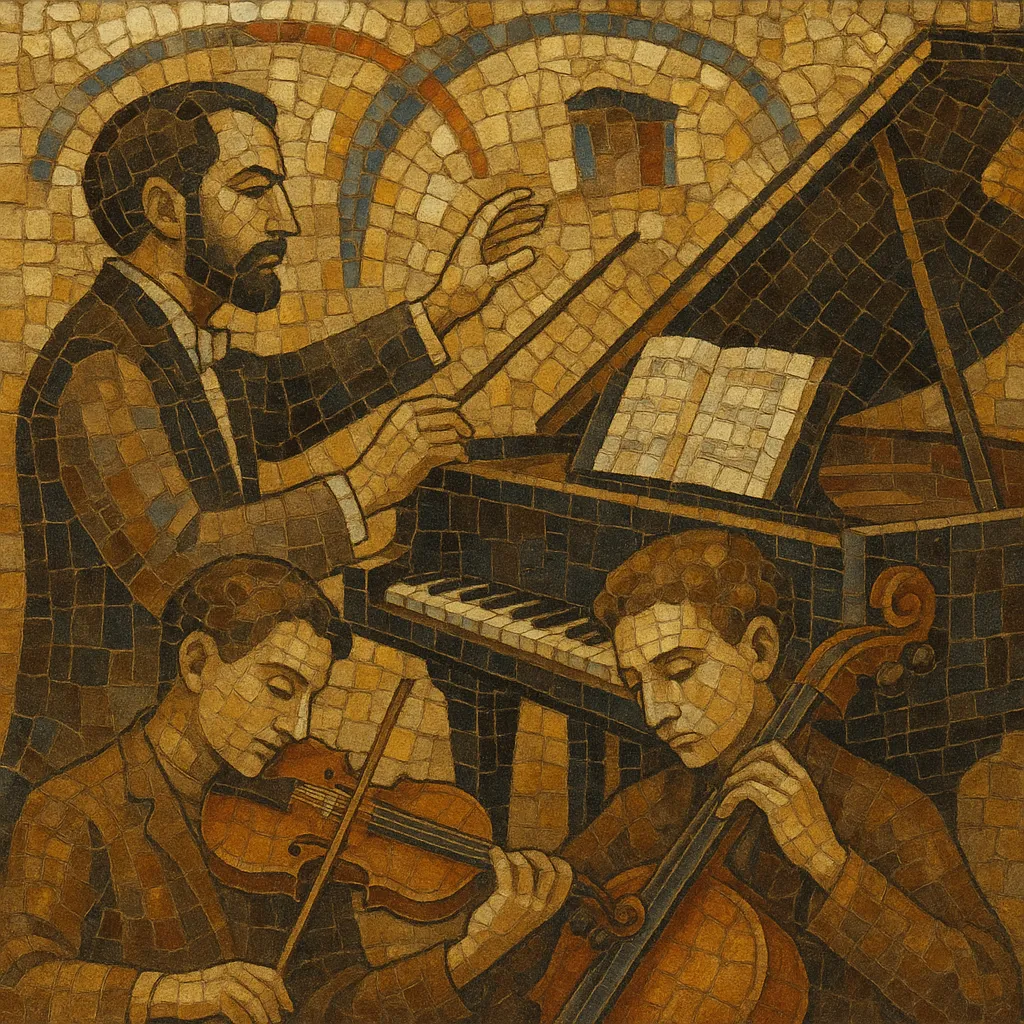Western classical is the notated art-music tradition that developed in Europe from medieval Christian chant into the large-scale secular and sacred forms of the Baroque, Classical, Romantic, and modern eras. It is characterized by staff notation, evolving systems of modality and tonality, and forms such as symphony, sonata, concerto, mass, opera, and chamber music.
Across its history, Western classical established an extensive theory of harmony and counterpoint, refined orchestration across strings, winds, brass, and percussion, and cultivated performance practices from a cappella chant to full symphonic and operatic forces. Its repertoire, pedagogy, and institutions (conservatories, orchestras, opera houses) made it a global reference point for compositional craft and instrumental technique.
Western classical music traces back to the codified liturgical traditions of the Latin West in the 9th–10th centuries. Staff notation emerged to fix the contours of chant, first as neumes and then on lines, enabling the development of measured rhythm and polyphony. Chant traditions (e.g., Gregorian, Ambrosian, Mozarabic) and scholastic thought provided the theoretical base for later modal systems and early counterpoint (organum, conductus, motet).
The Renaissance expanded vocal polyphony (Palestrina, Josquin), clarified text setting, and stabilized modal practice. The Baroque era introduced functional harmony and basso continuo, standardized tonal relationships, and created enduring forms and genres: opera (Monteverdi, Handel), concerto and sonata (Corelli, Vivaldi), and large sacred works. Bach and Handel culminated contrapuntal craft, while orchestration and instrumental virtuosity advanced.
The Classical era (Haydn, Mozart, Beethoven) emphasized clear phrase structure, balanced proportions, and the sonata principle (exposition–development–recapitulation). Public concert life and the modern symphony and string quartet flourished. The Romantic era broadened harmonic language, orchestral color, and expressive scope (Schubert, Chopin, Wagner, Tchaikovsky), while program music and nationalism diversified styles and idioms.
Modernism diversified techniques: extended tonality, atonality, serialism, neoclassicism, and spectral and minimalist approaches (Stravinsky, Schoenberg, Bartók, Messiaen, Ligeti, Reich). Post-war and contemporary composers integrated electronics, aleatoric methods, non-Western influences, and new performance practices. Today, Western classical is global, institutionally robust, and dialoguing with media, popular, and experimental traditions.


